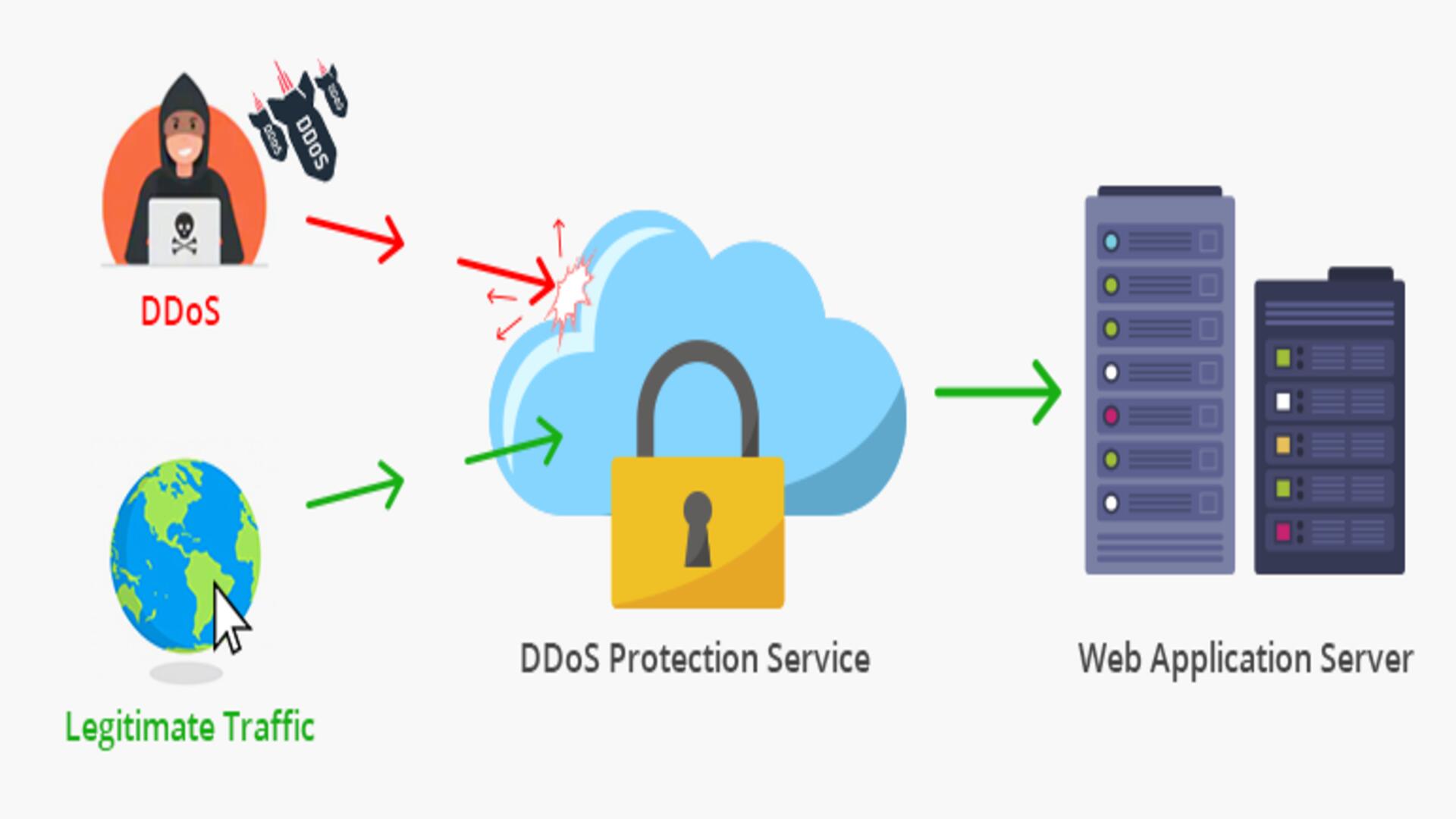Distributed Denial of Service (DDoS) attacks are a leading hot spot in the landscape of cybersecurity threats that have taken place over the past two decades. In this article, we will explain the DDoS attack prevention process. And introduce 10 important factors that must be present in today’s website protection solutions. These factors will help businesses deal with complex and large-scale DDoS attacks effectively.
Why do digital businesses need to protect their websites?
The 2021 DDoS threat landscape report shows increasingly sophisticated attacks. Besides, the volume, size and frequency also increased significantly. But there is only one point that remains constant, which is the attack target of hackers. They target the critical infrastructure of organizations and businesses.
The number of attacks per month has increased by 4 times. Since 2020, the number and extent of attacks are also increasing 2 to 3 times.
Many organizations are using the transport control protocol (TCP). Websites that are not enough or are not adequately protected will become “prey” for hackers. Businesses that don’t use defenses are very vulnerable to cyberattacks. An attacker can crash a system before a business implements its containment plan.
4 important stages to protect website against DDoS attacks
DDoS protection is the process of protecting a target from DDoS attacks. Basically, a DDoS attack prevention process consists of the following four stages:
Early detection : identify anomalies of traffic flow. Because that could be a sign of a DDoS attack. Organizations can detect signs of attacks if they have an early detection plan in place. The goal of this phase is to identify an immediate attack.
Attack redirection: when an attack is detected, organizations reroute traffic through DNS (Domain Name System) or BGP (Border Gateway Protocol) routing. Then decide to filter the traffic or remove it completely. DNS routing is always on. So it can respond to attacks quickly to protect the website. In addition, it effectively resists network and application layer attacks. BGP routing operates in either always-on or on-demand status.
Filter DDoS traffic: remove DDoS attack traffic by identifying variations between legitimate users (humans, API calls, and search engine bots) and malicious traffic. The ability to react quickly can stop the attack without affecting the user experience. And the anti-DDoS solution can distinguish it without stopping the wrong user.
Analytics: System logs and analytics help businesses gather information about attacks, identify attackers, and devise a recovery plan. Logs record attack details but not in real time. And often requires manual analysis of the details. Advanced security analysis techniques are automated. It can provide details about attacks and attack traffic.

10 capabilities required in a leading website protection solution
When choosing an anti-DDoS solution provider, you should consider the following factors:
Network capacity: this is the basic criterion to evaluate an anti-DDoS solution. Network capacity is the ability to expand the transmission line when an attack occurs. For example, a 1 Tbps (terabit per second) network could theoretically block up to the same amount of attack traffic, minus the bandwidth needed to keep it running. Businesses beware of On-Premise DDoS protection devices. Because they are limited by default. Not only limited by network line size, but also by internal hardware capacity.
Processing capacity: this function is measured by the packet transfer rate in Mpps (millions of packets per second). According to a cybersecurity organization, there was an attack at 155 Mpps recently. Besides, there have also been some attacks up to 300 Mpps. If the attack exceeds the supplier’s ability to handle, it will destroy their defense. Therefore, you should find out in advance about the network capacity of anti-DDoS service providers.
Latency: legitimate traffic accessing your website or application will go through the network of the website protection service provider. If the security service is on-demand, the traffic will go to the anti-DDoS service provider when there is an attack. If the anti-DDoS service is always on, all traffic will go through the provider’s server. The connection between your data center and your anti-DDoS service provider must be efficient. Otherwise it will cause high latency problem for users on Web/App.
Time to stop DDoS: most attacks can take down a target in minutes. But conversely, the recovery process can take up to hours. According to research by a cybersecurity organization, the trend of attacks is getting shorter. However, their level is more serious.
Detecting attacks in advance with real-time website protection services is a big advantage. Instant DDoS prevention protects organizations from attacks. Businesses should find a solution that can respond to DDoS attacks in seconds. Of course, you should check this out during the service trial period.
Prevent DDoS attacks at the network layer: DDoS attacks at the network layer are very large, causing severe damage to the infrastructure of enterprises. Anti-DDoS solution providers must separate legitimate traffic from malicious traffic. Then, discard the malicious packets and transmit the legitimate packets to their destination.
Preventing DDoS attacks at the application layer : in the OSI model, there are 7 layers. In which, the application layer is layer 7. DDoS attacks at layer 7 are often more difficult to detect than at the network layer. Attackers often spoof legitimate traffic to avoid security measures. Therefore, your website protection solution must distinguish between incoming HTTP/S traffic, DDoS bots and legitimate users.
Secondary asset protection: in a DDoS attack, network infrastructure such as web servers, DNS servers, email servers, FTP servers, and office CRM or ERP platforms can be targeted. Businesses need to assess the risk of their entire network infrastructure. Prioritize which components need to be protected first. DNS services are one of the most common targets of attacks. So make sure your website protection solution can keep DNS safe.
Protect individual IPs : cloud-based anti-DDoS services can only protect the entire IP range, not individual IP addresses. But now, advanced website protection services can protect individual IPs. In addition, it also allows you to register a public IP or domain name. Enterprises only need to add anti-DDoS service to DNS configuration to protect specific IPs immediately.
Support: Even if your anti-DDoS service has the ability to automatically react quickly to a cyber attack, be sure that the website protection solution providers will support you in a timely manner when an accident occurs.
When an attack occurs, you will have to contact the provider to understand the situation. And see how to deal with issues that affect your legitimate traffic. Make sure your anti-DDoS service is monitored in the Security Operations Center (SOC). And there are security experts available 24/7 for emergency support anytime, anywhere.
VNETWORK provides website protection services trusted by businesses
If your business depends on online applications, choose professional Anti DDoS service providers to keep your website safe from today’s cyberattacks.
VNIS (VNETWORK Internet Security) is a comprehensive website protection solution for businesses, controlling and preventing security holes and malicious data collectors. VNIS has a global CDN infrastructure, with a global CDN bandwidth of up to 2,600 Tbps. In addition, with the infrastructure of 2,300 PoPs CDN effectively strengthens the anti-DDoS layer 3/4/7.
VNIS also integrates the world’s leading CDN providers into the Multi CDN management system. This helps to optimize the transmission performance of the website system, while helping to combat DDoS attacks with the largest traffic.
Sign up for a trial to protect VNIS’s website today, or if you need assistance, please call the hotline: (028) 7306 8789.

